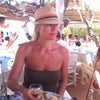The Copenhagen Opera House (in Danish usually called Operaen) is the national opera house of Denmark, and among the most modern opera houses in the world. It is also one of the most expensive opera houses ever built with construction costs well over 500 million U.S. dollars. It is located on the island of Holmen in the center of Copenhagen.
The Opera House was donated to the Danish state by the A.P. Møller and Chastine Mc-Kinney Møller Foundation in August 2000 (A.P. Møller was a co-founder of the company now known as Mærsk). Some politicians were offended by the private donation, in part because the full cost of the project would be tax deductible, thus virtually forcing the government to buy the building; but it was accepted by the Folketing and the government in the autumn of 2000. It was designed by the architect Henning Larsen and engineers Ramboll and Buro Happold and Theatre Consultant Theatreplan. The acoustics were designed by Arup Acoustics and architectural lighting design by Speirs and Major Associates. A.P. Møller had the final say in the design of the building, however, adding steel to the glass front, among other things. Construction began in June 2001 and was completed on October 1, 2004. It was opened on January 15, 2005 in the presence of Mærsk Mc-Kinney Møller, Danish Prime Minister Anders Fogh Rasmussen, and Queen Margrethe II.
The supertenor Plácido Domingo made a gala guest appearance as Sigmund in Wagner's Die Walküre on April 7, 2006 (production by Kasper Bech Holten). The performance was attended by Queen Margrethe II.
is just visible across the channel, and beyond that the dome of The Marble Church.]]
The Opera is located in Copenhagen just opposite the main castle Amalienborg at the shore of the harbor. The opera house is built in alignment with Amalienborg and The Marble Church, so that if one stands in the main entrance of the Opera, one can see the Marble Church over the water along the road through Amalienborg.
The specific part of the island where the Opera was built is named Dokøen, which means the Dock Island. Just a few meters west of the opera, one can still see an old dock and a pumping station.
The house is administered by the Royal Danish Theatre and is one of the best-equipped in the world. It has a main stage with five other stages directly connected, where large setups can be moved easily in and out.
There are between 1492 and 1703 seats, depending on the size of the orchestra. The 1492 seats are all individually angled in order to provide the best experience.
The orchestra pit provides room for 110 musicians and the building provides excellent sound quality for the orchestra. If the pit is filled, some musicians are located below a part of the stage, which has become controversial among members of the orchestra (according to tour guides in 2005), because this increases the sound levels beyond those acceptable in Denmark. However, the authorities have permitted this to happen. (Similar problems have dogged the smallish Opera theatre of the Sydney Opera House). During the building of the house, acoustic tests were carried out with the iron curtain in place while technical work was carried out on stage, so little consideration was given to balance between pit and stage. If the orchestra is small or absent, the pit can be covered and more seats can be present in the auditorium.
Just like the old Royal Danish Theatre in Copenhagen, the Queen has her own balcony on the left side of the auditorium, closest to the stage. According to the tour guide, she decided that she preferred this arrangement rather than the more conventional central placement because she loves to be close to the stage to see the artists preparing behind the sidewalls before entering the stage.
The foyer has been designed for comfort, based on behavioural research on operagoers maximizing the wall area for standing against, while still providing views across the entire foyer and one of the best views on Copenhagen.
Guided tours cover most of the building, including both the auditorium and backstage areas.
Besides the main stage, the building also includes a small stage for experimental theatre, a so-called "black box" theatre called Takkelloftet. It was named after the original Takkelloftet, a building just south of the Opera 280 meters long and built between 1767 and 1772 for storing ropes for the navy. Thus the opera maintains a connection to the marine history of its location.
Everything on the stage and in the audience area is totally black, and the audience's seats can easily be removed in order to make the room much easier to configure for alternative setups. There are up to approximately 200 seats for this stage.
Takkelloftet has its own foyer. In this room, some of the walls are decorated using the same Jura Gelb limestone as outdoor. These stones are mounted on the wall in a way that makes it possible to use the stone plates as a kind of music instrument just by knocking on them with bare hands.
The Opera has 6 main stages: 1 visible for the audience, and 5 for preparations and training. It has almost everything needed for opera, ballet etc., including stage elevators, movable balletfloors, etc. The building totals 41,000 m² and has 14 floors, of which 5 are below ground. It contains more than 1000 rooms, including a large orchestral rehearsal room. Despite its luxurious equipment, there are only approximately 1500 seats because a larger number of seats would hamper the quality of sound.
Unlike the old opera in Copenhagen, the artists are allowed to take the elevator from their dressing room to the stage, because the reliability is very good. Unfortunately, it takes more time to get to the stage than previously, which makes it impossible to get back to the dressing room for a quick change of clothes. This was forgotten during the initial design, but the scene technicians have constructed temporary dressing rooms near the main stage for quick changes of clothes or makeup. According to the tour guides in 2005, the artists are said to love this because it is not a perfect solution, and they don't like everything to be perfect.
The building makes it possible to go outside on the top floor, but it is only possible to walk comfortably at the south side of the building (opposite to the entrance). This is where the employees have their canteen, and the idea behind this design is to ensure that the employees are not seen from below by the visitors.
The building was designed by architect Henning Larsen in close and often problematic cooperation with Mærsk Mc-Kinney Møller. Mærsk wanted to ensure that the building would last for many years, wouldn't look bad after a number of years and wouldn't be an economic compromise. He personally tested seats and materials, he visited many places in the world to see how Operas were constructed and how the building materials were looking after having been exposed to weather for years. Henning Larsen, on the other hand, was trying to make sure that the original architectural ideas were carried through the construction process, especially concerning the large glass surface front, which became a matter of great controversy and subsequent compromise.
The building itself has an outside surface of Jura Gelb limestone. Canals have been dug to make the Opera look as if it were placed on an island just a bit larger than the building itself. This also meant that bridges were needed, and these bridges were made using very old oak, that was planted in the 19th century for the purpose of growing trees for a new national fleet, after having lost the old fleet to the Royal Navy after their bombardment of Copenhagen in September 1807. The front of the opera was originally meant to have a large glass surface, where you could see the shell of the auditorium from the harbor side. However, as Mærsk put it, glass does not age well, so the front was changed to have a metal grid in front of it.
The foyer floor is Sicilian Perlatino marble. There are three very remarkable lamps in the central part of the foyer, created by the Icelandic artist Olafur Eliasson. Each lamp consists of a very large number of pieces of glass, which are semipermeable (some light passes, some light reflects) with different permeability from different angles. Per Arnoldi designed the logo for the opera, which is visible in the marble floor just inside the entrance, and Per Kirkeby created four bronze reliefs for the wall to the auditorium, just below the maple wood part. Per Arnoldi also designed the large main curtain for the main stage, which is not only very special, but also impossible to take a picture of. It uses optical tricks to obtain a kind of three-dimensional effect, and the colors are rarely reproduced well on photographs.
The wall of the auditorium towards the foyer, and the wood of the balconies, is maple wood. It was originally the intention to make the maple wood look exactly the same way as the wood from a violin, by using the same technique, but that would have been far too expensive. Instead, they have tried to imitate the color using more traditional dying techniques, and the result is very close (the official homepage says differently, but the guides in the Opera tell this story). Due to the orange color and its form, it is suitably known by locals as the pumpkin.
The ceiling inside the auditorium is made using 105,000 sheets of gold leafs, almost 24 carat (100%). Pure 24 carat (100%) wouldn't stick well enough.[]
The floor in the main audience room is smoked oak. The balconies have been designed with holes in a very special pattern, that improve sound quality, as well as LED-based lighting that can be used in a variety of ways.
Route 903 of the Copenhagen Harbour Buses shuttles between Nyhavn and the Opera from 7-23 from Monday-Friday and from 10-23 on weekends. The opera is also served by Harbour Buses Routes 901 & 902, connecting it to various other points along the harbourfront.
Of regular buses, Route 66 goes to the Opera, connecting it to the Central Station.





